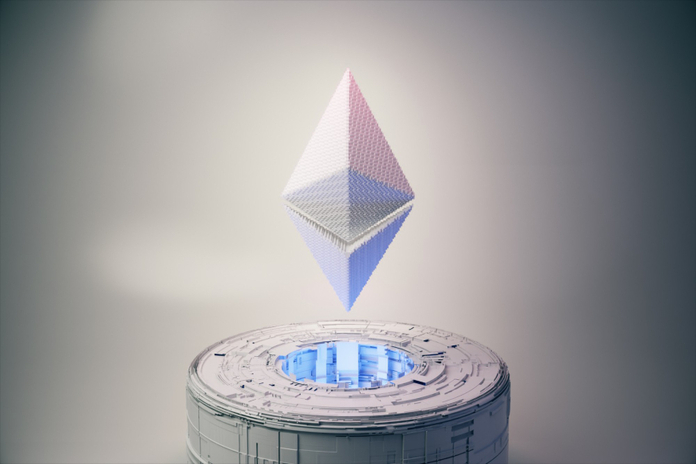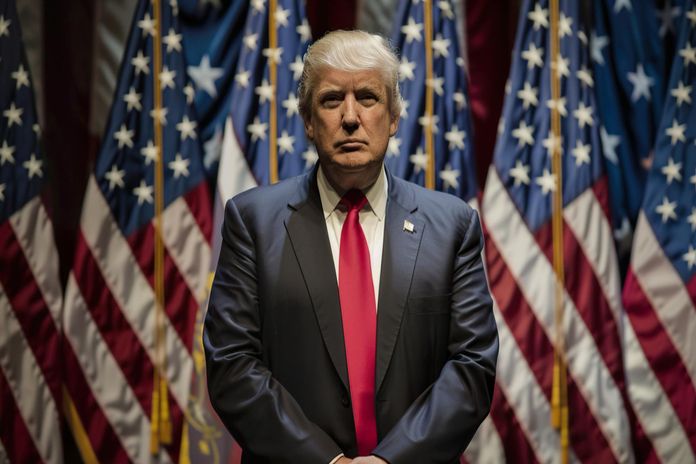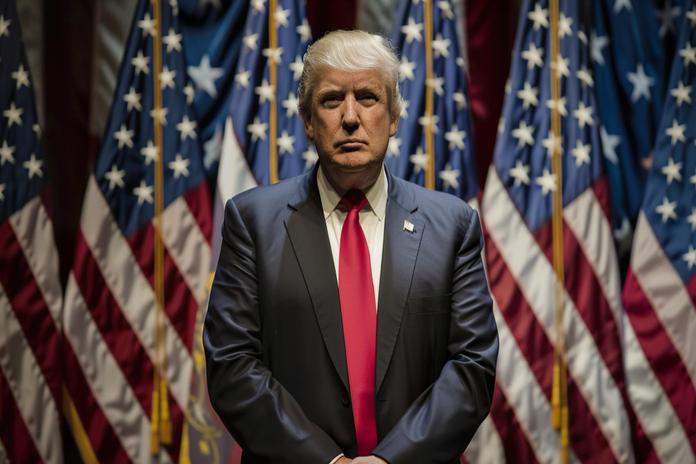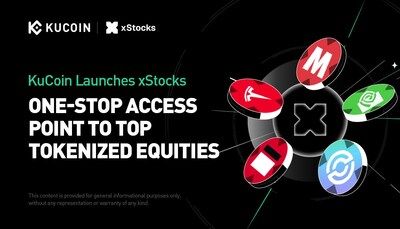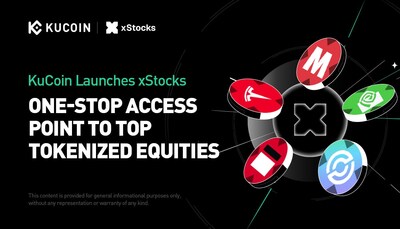- The Ether Machine expected to launch with over 400,000 Ether (“ETH“) and manage the largest pool of assets in a public vehicle for pure-play institutional-grade exposure to Ethereum and ETH-denominated yield.
- Led by Ethereum trailblazers with firsthand experience driving Ethereum‘s rise from a nascent protocol to a cornerstone of the digital asset ecosystem.
- Largest all-common-stock financing committed at announcement since 2021; Anchored by contribution of approximately $645 million (169,984 ETH) from Andrew Keys1, alongside an upsized common stock financing in excess of $800 million from top-tier institutional, crypto-native and strategic investors including 1Roundtable Partners / 10T Holdings, Archetype, Blockchain.com, cyber•Fund, Electric Capital, Kraken and Pantera Capital.
NEW YORK, July 21, 2025 /PRNewswire/ — The Ether Machine, Inc. (“the Company” or “The Ether Machine”), a newly formed entity enabling public market investors to access Ethereum yield, announced its public launch today through a definitive business combination agreement between The Ether Reserve, LLC and Dynamix Corporation (NASDAQ: DYNX). Upon the closing of the business combination, the combined entity will trade on NASDAQ under the ticker symbol “ETHM”.
The Ether Machine is building the largest public vehicle for institutional-grade exposure to Ethereum, offering secure, transparent, and compliant access to ETH-denominated yield. As a strategic Ether generation company, it aims to deliver long-term, risk-adjusted returns through staking, restaking, and decentralized finance strategies.
Senior Leadership
The Ether Machine is led by a visionary team of blockchain pioneers and finance veterans whose collective track record spans the earliest days of Ethereum and the development of foundational crypto infrastructure.
- Andrew Keys, Co-Founder and Chairman, is a trailblazer in institutional Ethereum adoption. As one of the early members at Consensys, he spearheaded the creation of the first Ethereum Blockchain-as-a-Service offering with Microsoft, which propelled ETH to trade above $1 in 2015. He co-founded the Enterprise Ethereum Alliance (EEA) in 2017 – the largest open-source blockchain consortium in the world with members including Intel, BP and Accenture. Most recently, he co-founded a $1 billion CFTC-registered commodity pool operator, DARMA Capital.
- David Merin, Co-Founder and CEO, is a leader in institutional Ethereum finance and infrastructure. In his prior role as head of corporate development at Consensys, he led over $700 million in fundraising, five acquisitions, and more than fifty strategic investments — helping transform the company into a global Ethereum software leader. Prior to that, David played a key role in Consensys’ transition from a decentralized ecosystem studio to a cohesive, integrated Ethereum software company.
- Tim Lowe, Chief Technology Officer, is a pioneer in Ethereum staking and institutional blockchain infrastructure, with over two decades of experience building mission-critical financial systems. As CTO of DARMA Capital and former Head of Staking at Consensys, he helped architect and launch some of the earliest institutional staking platforms, setting benchmarks for security and performance. He also played a key role in Consensys’ enterprise blockchain initiatives, including tokenized environmental markets and asset management tools.
- Darius Przydzial CFA, CQF, Head of DeFi, is an expert and strategist in DeFi and Ethereum infrastructure. Since 2017, when he joined Consensys, he has advised several top DeFi protocols, including being a core contributor at Synthetix. Prior to his work in Web3, Darius spent over a decade at J.P. Morgan, Fortress Investment Group, and SAC Capital, where he led quantitative research and risk strategies.
- Jonathan Christodoro, Co-Founder and Vice Chairman, brings over two decades of experience across several premier investment management firms, including Icahn Capital LP. In these roles, he has served on over a dozen Board of Directors helping scale and grow both private and public companies. He began his career in investment banking at Morgan Stanley advising companies across a variety of industries. Within financial technology, he currently serves on the board of directors of PayPal and has done so since its spin-out from eBay.
Management Comments
“The Ether Machine provides secure, liquid access to Ether – the digital oil that is powering the next era of the digital economy,” said Andrew Keys, Co-Founder and Chairman of The Ether Machine. “We have assembled a team of ‘Ethereum Avengers’ to actively manage and unlock yields to levels we believe will be market-leading for investors.”
“The Ether Machine is purpose-built for this moment in the digital assets space. Regulatory clarity and growing investor appetite are finally meeting a platform with deep technological experience and day-one dedication to Ethereum,” said David Merin, Co-Founder and CEO of The Ether Machine.
“The Ether Machine will set a new standard for excellence for digital assets, and I look forward to instituting corporate best practices as we work to institutionalize the use of Ethereum,” said Jonathan Christodoro, Co-Founder and Vice Chairman of The Ether Machine.
“We are excited to partner with The Ether Machine at a pivotal time in the industry, as Wall Street embraces the transformative potential of blockchain technology and regulatory clarity paves the way for innovative use cases,” said Andrejka Bernatova, Founder, Chair, and CEO of Dynamix Corporation.
Company Strategy
The Ether Machine plans to operate as a strategic Ether generation company with three core objectives:
1. Generate Alpha: The Ether Machine’s ongoing ether generation strategies are expected to include staking and restaking (i.e., generating yield for increasing Ethereum network security), and treasury yield from battle-tested decentralized finance protocols. It plans to leverage rigorous risk management to generate prudent risk-adjusted returns.
2. Catalyze the Ecosystem: The Ether Machine plans to actively support Ethereum-native projects via ecosystem partnerships, open-source contributions, and early participation in emergent protocols. The Company also plans to publish Ethereum-focused research and educational content to deepen the understanding of the network’s potential and drive broader adoption.
3. Build Infrastructure Solutions: The Company expects to provide infrastructure solutions for institutions and Ethereum-native projects – eliminating the need to develop internal systems. Services may include validator management, block-building and tailored yield strategies. All activities will be governed by strict internal risk frameworks and regulatory compliance protocols.
Transaction Highlights
- Landmark Transaction: This transaction marks the largest all-common-stock financing committed at announcement since 2021.
- Anchor Investment: Contribution of approximately $645 million (representing 169,984 ETH) by Co-Founder and Chairman Andrew Keys at inception.
- Blue-chip Institutional Support: In excess of $800 million of upsized, fully-committed financing at $10.00 per share from institutional and strategic investors including 1Roundtable Partners / 10T Holdings, Archetype, Blockchain.com, cyber•Fund, Electric Capital, Kraken and Pantera Capital.
- Immediate Scale: The transaction is expected to deliver over $1.6 billion of gross proceeds, including over $1.5 billion of fully committed financing and up to $170 million of cash held in Dynamix’s trust account. The company is expected to launch with over 400,000 ETH on its balance sheet, making it the largest public Ether generation company.
The boards of directors of both The Ether Machine and DYNX have unanimously approved the proposed business combination, which is expected to close by the fourth quarter of 2025, subject to shareholder approval and other customary closing conditions.
Advisors
Citigroup Global Markets, Inc. is serving as Capital Markets Advisor to The Ether Machine and served as Sole Placement Agent for institutional and strategic investors on the upsized $800 million in committed financing.
Skadden, Arps, Slate, Meagher & Flom LLP is serving as legal counsel to The Ether Machine. Davis Polk & Wardwell LLP is serving as legal counsel to Citigroup.
Cohen & Company Capital Markets, a division of J.V.B. Financial Group, LLC (“Cohen & Company”) and Scotia Capital (USA) Inc. are acting as joint financial advisors to Dynamix Corporation. Cohen & Company is serving as Lead Capital Markets Advisor to Dynamix.
Gibson, Dunn & Crutcher LLP is serving as legal counsel to Dynamix Corporation.
Conference Call Information
The Ether Machine will hold an investor conference call to discuss the proposed transaction on Tuesday, July 22nd at 10:00 A.M. ET. Please dial in to the conference call at the link here: https://teneo.zoom.us/j/84993884356. A replay will be available and accessible at www.ethermachine.com.
About The Ether Machine
Formed through a business combination (to be completed) between The Ether Reserve, LLC and Dynamix Corp, a NASDAQ-listed special purpose acquisition company (the “Business Combination”), pursuant to a definitive business combination agreement (the “Business Combination Agreement”), The Ether Machine is an Ethereum yield and infrastructure company purpose-built for institutional management and scale. Expected to be anchored by one of the largest on-chain ETH positions of any public entity, The Ether Machine will actively generate and optimize ETH-denominated returns through staking, restaking, and secure, professionally risk-managed DeFi participation. The Company also expects to provide turnkey infrastructure solutions for enterprises, DAOs, and Ethereum-native builders seeking access to Ethereum‘s consensus and blockspace economy. To learn more, please visit www.ethermachine.com.
About Dynamix Corporation
Dynamix Corporation (“DYNX”) is a special purpose acquisition company incorporated under the laws of Cayman Islands for the purpose of effecting a merger, amalgamation, share exchange, asset acquisition, share purchase, reorganization or similar business combination with one or more businesses. DYNX is led by the following seasoned investors and industry executives: Andrea “Andrejka” Bernatova, Chief Executive Officer and Chairman, Nader Daylami, Chief Financial Officer, Philip Rajan, Vice President of M&A and Strategy and board members, Lynn A. Peterson, Diaco Aviki and Tyler Crabtree. Additionally, Ralph Alexander, Joe Gatto, Peter Gross, Jimmy Henderson, Tommy Stone, and Steve Webster served as Advisors to DYNX. DYNX maintains a corporate website at https://dynamix-corp.com.
Additional Information and Where to Find It
Dynamix Corporation (“DYNX”) and The Ether Machine, Inc. (“The Ether Machine”) intend to file with the Securities and Exchange Commission (the “SEC”) a Registration Statement on Form S-4 (as may be amended, the “Registration Statement”), which will include a preliminary proxy statement of DYNX and a prospectus of The Ether Machine (the “Proxy Statement/Prospectus”) in connection with the Business Combination and the private placements in connection with the Business Combination (the “Private Placement Transactions”) and the other transaction contemplated by the Business Combination Agreement and/or described in this press release (together with the Business Combination and the Private Placement Transactions, the “Proposed Transactions”). The definitive proxy statement and other relevant documents will be mailed to shareholders of DYNX as of a record date to be established for voting on the Business Combination and other matters as described in the Proxy Statement/Prospectus. DYNX and/or The Ether Machine will also file other documents regarding the Proposed Transactions with the SEC. This press release does not contain all of the information that should be considered concerning the Proposed Transactions and is not intended to form the basis of any investment decision or any other decision in respect of the Proposed Transactions. BEFORE MAKING ANY VOTING OR INVESTMENT DECISION, SHAREHOLDERS OF DYNX AND OTHER INTERESTED PARTIES ARE URGED TO READ, WHEN AVAILABLE, THE PRELIMINARY PROXY STATEMENT/PROSPECTUS, AND AMENDMENTS THERETO, AND THE DEFINITIVE PROXY STATEMENT/PROSPECTUS AND ALL OTHER RELEVANT DOCUMENTS FILED OR THAT WILL BE FILED WITH THE SEC IN CONNECTION WITH DYNX’S SOLICITATION OF PROXIES FOR THE EXTRAORDINARY GENERAL MEETING OF ITS SHAREHOLDERS TO BE HELD TO APPROVE THE PROPOSED TRANSACTIONS AND OTHER MATTERS AS DESCRIBED IN THE PROXY STATEMENT/PROSPECTUS BECAUSE THESE DOCUMENTS WILL CONTAIN IMPORTANT INFORMATION ABOUT DYNX, ETH RESERVE, THE ETHER MACHINE AND THE PROPOSED TRANSACTIONS. Investors and security holders will also be able to obtain copies of the Registration Statement and the Proxy Statement/Prospectus and all other documents filed or that will be filed with the SEC by DYNX and The Ether Machine, without charge, once available, on the SEC’s website at www.sec.gov or by directing a request to: Dynamix Corp, 1980 Post Oak Blvd., Suite 100, PMB 6373, Houston, TX 77056 ; e-mail: info@regen.io, or to: The Ether Machine, Inc., 2093 Philadelphia Pike #2640, Claymont, DE 19703; e-mail: dm@etherreserve.com.
NEITHER THE SEC NOR ANY STATE SECURITIES REGULATORY AGENCY HAS APPROVED OR DISAPPROVED THE PROPOSED TRANSACTIONS DESCRIBED HEREIN, PASSED UPON THE MERITS OR FAIRNESS OF THE BUSINESS COMBINATION OR ANY RELATED TRANSACTIONS OR PASSED UPON THE ADEQUACY OR ACCURACY OF THE DISCLOSURE IN THIS REPORT. ANY REPRESENTATION TO THE CONTRARY CONSTITUTES A CRIMINAL OFFENSE.
The Class A Common Stock to be issued by The Ether Machine and the class A units issued and to be issued by The ETH Reserve, LLC (“ETH Reserve”) in each case, in connection with the Proposed Transactions, have not been registered under the Securities Act of 1933, as amended (the “Securities Act”) and may not be offered or sold in the United States absent registration or an applicable exemption from the registration requirements of the Securities Act.
Participants in the Solicitation
DYNX, The Ether Machine, ETH Reserve and their respective directors and executive officers may be deemed under SEC rules to be participants in the solicitation of proxies from DYNX’s shareholders in connection with the Business Combination. A list of the names of such directors and executive officers, and information regarding their interests in the Business Combination and their ownership of DYNX’s securities are, or will be, contained in DYNX’s filings with the SEC. Additional information regarding the interests of the persons who may, under SEC rules, be deemed participants in the solicitation of proxies of DYNX’s shareholders in connection with the Business Combination, including the names and interests of ETH Reserve and The Ether Machine’s directors and executive officers, will be set forth in the Proxy Statement/Prospectus, which is expected to be filed by DYNX and The Ether Machine with the SEC. Investors and security holders may obtain free copies of these documents as described above.
No Offer or Solicitation
This press release is for informational purposes only and is not a proxy statement or solicitation of a proxy, consent or authorization with respect to any securities or in respect of the Proposed Transactions and shall not constitute an offer to sell or exchange, or a solicitation of an offer to buy or exchange the securities of DYNX, ETH Reserve or The Ether Machine, or any commodity or instrument or related derivative, nor shall there be any sale of any such securities in any state or jurisdiction in which such offer, solicitation, sale or exchange would be unlawful prior to registration or qualification under the securities laws of such state or jurisdiction. No offer of securities shall be made except by means of a prospectus meeting the requirements of the Securities Act or an exemption therefrom. Investors should consult with their counsel as to the applicable requirements for a purchaser to avail itself of any exemption under the Securities Act.
Forward-Looking Statements
This press release contains certain forward-looking statements within the meaning of the U.S. federal securities laws with respect to the Proposed Transactions and the parties thereto, including expectations, hopes, beliefs, intentions, plans, prospects, results or strategies regarding The Ether Machine, ETH Reserve, DYNX and the Proposed Transactions and statements regarding the anticipated benefits and timing of completion of the Proposed Transactions, business plans and investment strategies of The Ether Machine, ETH Reserve and DYNX, ETH Reserve’s ability to stake and leverage capital markets and other staking operations and participation in restaking, the amount of capital expected to be received in the Proposed Transactions, the assets held by The Ether Machine, ether’s position as the most productive digital asset and The Ether Machine’s ability to benefit from such position, plans to increase yield to investors, any expected growth or opportunities associated with ether, The Ether Machine’s plans to provide infrastructure solutions, plans to support Ethereum-native projects via ecosystem partnerships, open-source contributions, and early participation in emergent protocols, The Ether Machine’s listing on an applicable securities exchange and the timing of such listing, expectations of ether to perform as a superior treasury asset, the upside potential and opportunity for investors resulting from any Proposed Transactions, any proposed transaction structures and offering terms and ETH Reserve’s and The Ether Machine’s plans for ether adoption, value creation, investor benefits and strategic advantages. These forward-looking statements generally are identified by the words “believe,” “project,” “expect,” “anticipate,” “estimate,” “intend,” “strategy,” “future,” “opportunity,” “potential,” “plan,” “may,” “should,” “will,” “would,” “will be,” “will continue,” “will likely result,” and similar expressions.
These are subject to various risks and uncertainties, including regulatory review, Ethereum protocol developments, market dynamics, the risk that the Proposed Transactions may not be completed in a timely manner or at all, failure for any condition to closing of the Business Combination to be met, the risk that the Business Combination may not be completed by DYNX’s business combination deadline, the failure by the parties to satisfy the conditions to the consummation of the Business Combination, including the approval of DYNX’s shareholders, or the Private Placement Transactions, costs related to the Proposed Transactions and as a result of becoming a public company, failure to realize the anticipated benefits of the Proposed Transactions, the level of redemptions of DYNX’s public shareholders which may reduce the public float of, reduce the liquidity of the trading market of, and/or maintain the quotation, listing, or trading of the Class A shares of DYNX or the shares of Class A Common Stock of The Ether Machine, the lack of a third-party fairness opinion in determining whether or not to pursue the Business Combination, the failure of The Ether Machine to obtain or maintain the listing of its securities any stock exchange on which The Ether Machine’s Class A Common Stock will be listed after closing of the Business Combination, changes in business, market, financial, political and regulatory conditions, risks relating to The Ether Machine’s anticipated operations and business, including the highly volatile nature of the price of ether, the risk that The Ether Machine’s stock price will be highly correlated to the price of ether and the price of ether may decrease between the signing of the definitive documents for the Proposed Transactions and the closing of the Proposed Transactions or at any time after the closing of the Proposed Transactions, risks related to increased competition in the industries in which The Ether Machine will operate, risks relating to significant legal, commercial, regulatory and technical uncertainty regarding ether, risks relating to the treatment of crypto assets for U.S. and foreign tax purposes, challenges in implementing its business plan including ether-related financial and advisory services, due to operational challenges, significant competition and regulation, being considered to be a “shell company” by any stock exchange on which The Ether Machine’s Class A Common Stock will be listed or by the SEC, which may impact the ability to list The Ether Machine’s Class A Common Stock and restrict reliance on certain rules or forms in connection with the offering, sale or resale of securities, the outcome of any potential legal proceedings that may be instituted against ETH Reserve, DYNX, The Ether Machine or others following announcement of the Business Combination and those risk factors discussed in documents of ETH Reserve, The Ether Machine, or DYNX filed, or to be filed, with the SEC.
The foregoing list of risk factors is not exhaustive. You should carefully consider the foregoing factors and the other risks and uncertainties described in the “Risk Factors” section of the final prospectus of DYNX dated as of November 20, 2024 and filed by DYNX with the SEC on November 21, 2024, DYNX’s Quarterly Reports on Form 10-Q, DYNX’s Annual Report on Form 10-K filed with the SEC on March 20, 2025 and the registration statement on Form S-4 and proxy statement/prospectus that will be filed by The Ether Machine and DYNX, and other documents filed by DYNX and The Ether Machine from time to time with the SEC, as well as the list of risk factors included herein. These filings do or will identify and address other important risks and uncertainties that could cause actual results to differ materially from those contained in the forward-looking statements. Additional risks and uncertainties not currently known or that are currently deemed immaterial may also cause actual results to differ materially from those expressed or implied by such forward-looking statements. Readers are cautioned not to put undue reliance on forward-looking statements, and none of the parties or any of their representatives assumes any obligation and do not intend to update or revise these forward-looking statements, each of which are made only as of the date of this press release.
1 For the purposes of this release, all values assume one ETH is valued at $3,800 based on market pricing as of July 20, 2025.
 View original content:https://www.prnewswire.com/news-releases/the-ether-machine-to-go-public-with-over-1-5-billion-of-fully-committed-capital-302509349.html
View original content:https://www.prnewswire.com/news-releases/the-ether-machine-to-go-public-with-over-1-5-billion-of-fully-committed-capital-302509349.html
SOURCE The Ether Machine

Featured Image: depositphotos @ ilolab
Disclaimer
